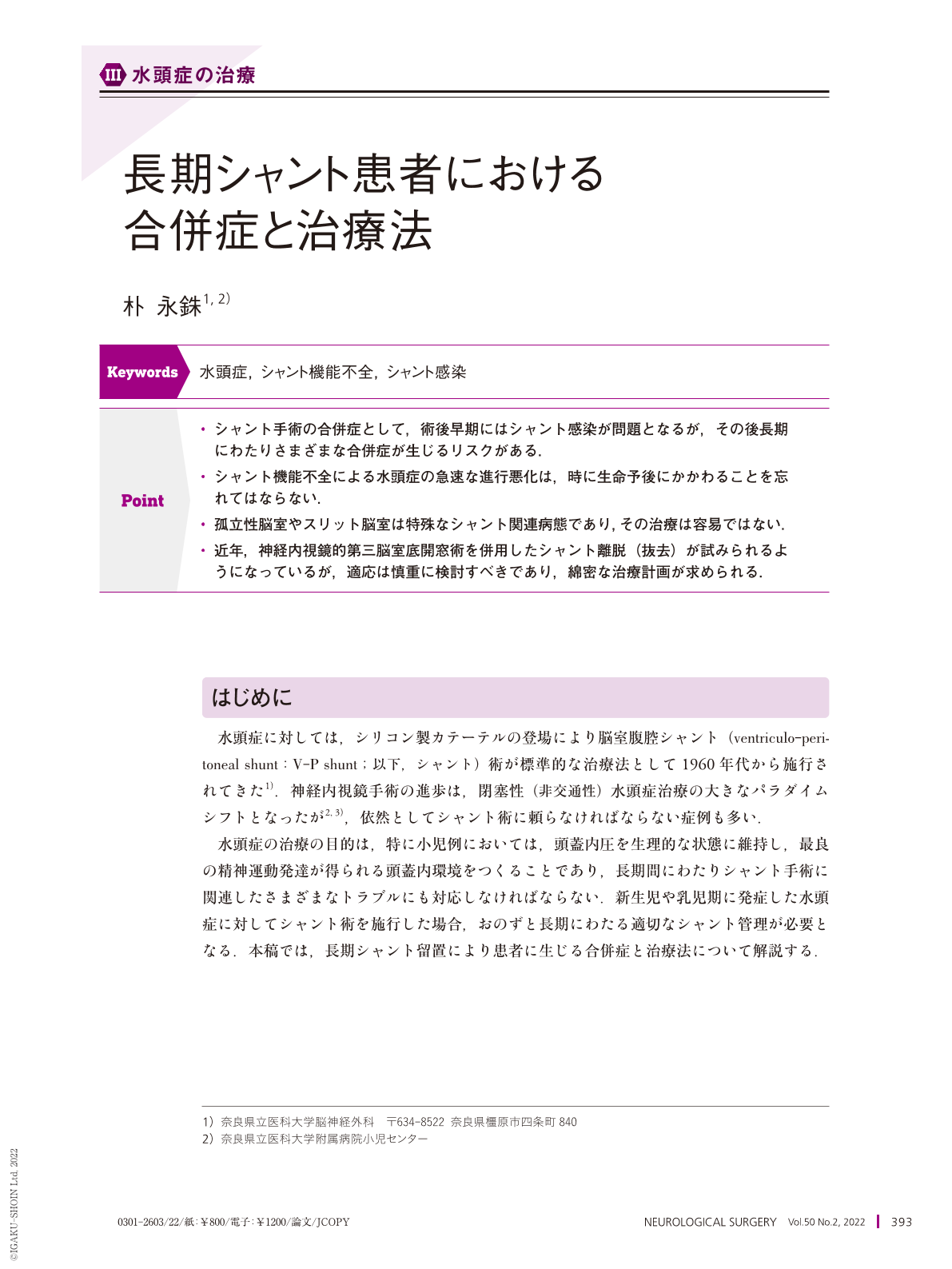Japanese
English
- 有料閲覧
- Abstract 文献概要
- 1ページ目 Look Inside
- 参考文献 Reference
Point
・シャント手術の合併症として,術後早期にはシャント感染が問題となるが,その後長期にわたりさまざまな合併症が生じるリスクがある.
・シャント機能不全による水頭症の急速な進行悪化は,時に生命予後にかかわることを忘れてはならない.
・孤立性脳室やスリット脳室は特殊なシャント関連病態であり,その治療は容易ではない.
・近年,神経内視鏡的第三脳室底開窓術を併用したシャント離脱(抜去)が試みられるようになっているが,適応は慎重に検討すべきであり,綿密な治療計画が求められる.
The purpose of treatment hydrocephalus is to maintain intracranial pressure, as well as to create a favorable psychomotor developmental environment, particularly in pediatric cases.
Various complications associated with shunt surgery require long-term care. When a shunt is performed for neonates and infants with hydrocephalus, proper management is required thereafter during whole their life.
The most common complication that can occur as a result of shunt surgery is obstruction of the ventricular catheter. Ventricular catheter obstruction can be avoided by placing that the tip of the catheter is placed in an appropriate position. A further measure would include preventing the ventricular catheter from being pulled out as the skull expands.
The next common complication is obstruction of the peritoneal catheter. The risk of occlusion can be reduced by making that the tip of the peritoneal catheter is open-ended as opposed to having side slits.
Isolated ventricles and slit ventricle syndrome are peculiar shunt-related conditions that are difficult to treat.
When shunt dysfunction occurs, hydrocephalus can progress slowly, but in many cases the patient's condition deteriorates rapidly and requires immediate medical intervention.
Recently, neuroendoscopic surgery has been actively performed for cases of shunt dysfunction and prophylactic replacement of peritoneal catheters, and attempts have been made to remove the shunt device.
Shunt infection is another troublesome complication in the management of hydrocephalus and has not yet been resolved. However, if all staff involved in shunt surgery have a common understanding and adopt fixed protocols related to preoperative, intraoperative, and postoperative management, the incidence of infection can be significantly reduced. Furthermore, the development of new and improved catheters may also contribute to a reduction in shunt infection.
Neurosurgeons should be cognizant that a delay in the diagnosis and treatment of shunt-related complications in patients with hydrocephalus could result in death. Shunt surgery for the treatment of pediatric hydrocephalus is merely the beginning, as neurosurgeons must be responsible for management until the child reaches adulthood.

Copyright © 2022, Igaku-Shoin Ltd. All rights reserved.


